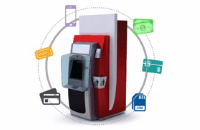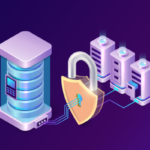Thanks to the exponentially evolving electronic payment technologies, the banking sector is on the precipice of some dramatic changes. Today, a small startup can identify, develop and market a single payment service and take away a big chunk of business. Therefore it is not only an opportunity for such startups and related businesses (for example Telcos) to delve into the financial payments market, it is also high time for banks and other financial institutions to use their massive infrastructure and industry insights to develop new and exciting products through these evolving technologies. One of these buzzed-about technologies is Mobile Money, which we’ll explore in this post.
Branchless Banking is finally in a place where it can hold its own among the various electronic payment options in the market. The growth of technology has opened gateways that no one expected before. This brings out the more efficient ways to handle the financial transactions, keeping records and learning from business analytics.
Mobile Money
The basic idea behind mobile money is to introduce mobility into banking system, moving away from brick-and-mortar branch banking. Now, transactions are possible with a tap of a finger, while in a moving vehicle, or while chatting with friends on a social media app, or when talking to your neighborhood merchant while buying groceries. The ease of use with these new technologies almost makes cash and plastic transactions seem inconvenient. In the upcoming years, we’ll see more customers using mobile wallets. Specially customers who are currently out of the banking net. While many banked customers may also use wallets due to its ease of use simply to keep up with the new and exciting features that these technologies offer.
Mobile Money is a product where users get a virtual wallet instead of a physical account in some bank. The creation process for these wallets is a lot simpler than traditional banking. Customers can get new wallets over-the-counter at supporting merchants, mall counters, etc. It is also possible for the customer to not open a wallet at all and simply request the merchant (who has his/her own wallet) to create a transaction and share the secret codes with the sender and the beneficiary over text messages, enabling the beneficiary to visit any supporting merchant across the country and receive their cash against the secret codes. Users can also use wallet for other type of transactions like withdrawals, bill payments, etc. Mobile money products usually require no or minimal fees for maintaining the wallet, registration with minimum paper work and some unique identification like CNIC, mobile number, etc.
Industry Trends
The annual report (2015) of World Bank Group provides some shocking trends in the field of mobile money. It emphasized the growth of mobile money, especially in developing countries. There are some ground realities behind these trends such as inconvenience due to remote locations, less to no access to banks, extensive paperwork and testimonial requirements making it difficult to get an account etc.
After Africa, South Asia is the next big market for mobile wallets. This shows that branchless banking is gaining more popularity in developing countries. Similarly, the report gave a brief analysis for the usage of mobile wallets based on the income of individuals. This analysis gives interpretation that mobile wallets are more popular among people with low income. The following graph represent the usage of mobile wallets distinguished by different levels of incomes. The dominant reasons behind these statistics are low maintenance requirement for wallets, easy accessibility through mobile devices, nearby shops or agents etc. Also note that this methodology is rapidly gaining popularity among the masses, especially among men and women aging 15 to 24, with a variety of income ranges.
Leading The Way In Mobile Money Innovation
TPS saw this opportunity early on and started developing Mobile Money solution. Today TPS has a diverse set of features clubbed together in IRIS Money, a digital wallet and branchless banking solution. A customer can go to a roadside agent and ask him to transfer money to a relative in a different city. The agent can either transfer through his own wallet or make a new wallet for the customer.
For such a network to work, simpler agent registration and customer onboarding is very important. These wallets may also be configured as needed for different business products. Considering this and several other business cases, following technical features were developed in TPS Mobile Money to be able to configure and develop an array of business products in the branchless banking space. Following are some of the main features.
Agent Creation
Agent creation is a process in which the financial institution saves the information of its agents for various back office operations. This includes configuration of Mobile Money services and associating them with the various handlers under each agent.
Handlers and Services
‘Handlers’ are defined under agents. They are people who directly interact with customers and provide services to them. These handlers may be existing shopkeepers, vendors, etc. in the market that signup to be part of the merchant network. Each handler is allowed to provide some specific set of services, enabled by linking the respective services to the handlers.
Hierarchal Structure
Mobile money allows to create a hierarchy of agents. Each agent may have handlers under him/her or they can have more agents under them. Agent hierarchy is associated with various other concepts such as shared limits among various tiers of agents. The hierarchal view helps to determine the overall structure of a vast agent network.
Limits and Shared Limits
Limits on different agents in mobile money is helps manage agent hierarchy. This feature enables controlling the daily, monthly or yearly limits of agents. On the other hand, shared limits are helpful where hierarchal structure is available. Child agents may utilize or be otherwise dependent on the shared limit of parent.
Wallet Creation
Mobile money offers two different types of wallets i.e. agent wallets and individual wallets. When customers do not have their own wallet they can utilize an agents’ wallet for transactions. Individual wallets give the customers freedom to send and receive money directly through their own wallet instead of going to an agent.
Internal and External Instruments
Mobile Money offers both, internal (Stored Value Accounts) and external instruments. There can be multiple SVAs in a wallet but only one SVA against each currency. On the other hand, external instruments are created to associate bank accounts and cards with the wallet. Wallets are by default associated with SVAs. However, a customer can create one or more external instruments to transfer amount using their bank accounts or cards.
Know Your Customer (KYC)
Mobile Money streamlines the process of KYC. Issuers can use different levels of information to apply different rules. They can offer limited services to customers who have downloaded an app but haven’t provided their biometric information. By using these limits, issuers encourage customers to provide more information.
Wallet Alias
The main purpose to create wallets is to make transactions as swiftly as possible with minimum user information. This leads to the idea of wallet alias which an issuer can use to identify users against their wallets. Issuers can define alias when they create new wallets. Issuers can later use these aliases to identify wallets with unique identification such as mobile number, CNIC etc.
Security
Security is of prime importance in TPS’s financial applications and Mobile Money is no exception. Keeping up with the latest offerings in security, TPS’ mobile wallet solution offers features like QR Codes and OTPs for authentication. Furthermore, suspect locations/agents can be further restricted through limits.










Leave A Comment